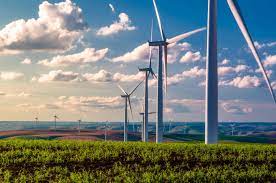More than 110 countries want the COP28 climate negotiations to adopt a goal of tripling renewable energy and doubling energy efficiency by 2030, European Commission President Ursula von der Leyen said Friday.
The European Union first appealed for the new target earlier this year, and the cause has since been taken up by COP28 hosts the United Arab Emirates, then the G7 and G20 groups of nations.
G20 nations alone account for nearly 80 percent of global greenhouse gas emissions.
Von der Leyen told leaders at the UN climate talks in Dubai that it was “fantastic” that more than 110 nations had already embraced the goal.
“I call now on all of us to include these targets in the final COP decision, because this sends a strong message to investors and consumers alike,” she said from the podium.
The discussions about the renewables goal are both separate but closely linked to far more difficult negotiations about whether a final COP28 deal will commit nations to phasing down — or phasing out — all fossil fuels.
In September, when G20 nations committed to “encourage efforts” towards tripling renewables capacity, their final statement remained silent about the future role played by fossil fuels, which account for the bulk of greenhouse gas emissions.
All credible pathways for achieving global carbon neutrality by mid-century depend on massively scaling up wind, solar, hydroelectric and other renewable energies such as biomass to displace the demand for planet-heating oil, gas and coal.
This is “the single most important lever” for reducing carbon pollution from burning fossil fuels, and capping warming under the Paris Agreement’s ambitious threshold of 1.5 degrees Celsius compared with the pre-industrial period, the International Energy Agency (IEA) has said.
There has already been progress. Between 2015 and 2022, renewable capacity increased on average by 11 percent each year.
Against a backdrop of soaring oil prices and energy insecurity linked to the war in Ukraine, the IEA forecasts unprecedented growth of about 30 percent in 2023.
Not all countries will have to make the same efforts to slash emissions. Of the 57 nations analysed by the think tank Ember, more than half were on track to meet or exceed their 2030 targets.
But other large emitters such as Australia, Japan, South Korea and the United Arab Emirates still have plenty of room for improvement.

 Iran Energy News Oil, Gas, Petrochemical and Energy Field Specialized Channel
Iran Energy News Oil, Gas, Petrochemical and Energy Field Specialized Channel



